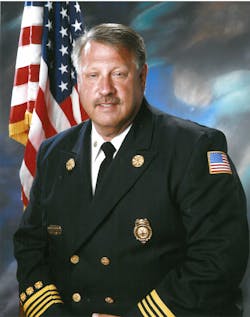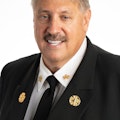Several years ago, after attending a conference in Clearwater Beach, FL, I needed to get to the Tampa airport. I thought I would try this new Uber thing I was hearing about. I opened the app, entered my pickup and drop-off location, hit the set button, and I quickly got a notice telling me Jim was going to pick me up in 4 minutes. The icon of his car even showed up on a map on my phone.
This scenario likely sounds commonplace to anyone who uses transportation network companies, like Uber or Lyft, but Jim shared with me something quite interesting on our ride to the airport. Jim told me he had just delivered an important envelope across town from one law firm to another. There was no passenger escorting the envelope; it was just him and the envelope. He also told me about a trip where someone left their phone at a restaurant. He was dispatched to the restaurant, picked up the phone and delivered it to their office. Small businesses are now using Lyft and Uber to deliver flowers, food, clothes and more. Uber has even been used to deliver blood from a blood center to a hospital.
So does it surprise you that some EMS agencies are using Lyft and Uber to move low-acuity patients?
Unique models
MedStar Mobile Healthcare system in Fort Worth, TX, starting using Lyft last January. Simply put, the patient calls 9-1-1 and the triage nurses working in the communication center evaluate the call to determine whether an ambulance is needed or some other mode of transportation, such as a ride-sharing service. If the nurse feels the call does not warrant an ambulance, the option is available to send a Lyft car to the address to transport the patient to an urgent care center, the emergency department or a doctor. MedStar can track the Lyft driver from start to finish, and share information with both the driver and the patient. None of the Lyft drivers have medical training, and they are not expected to perform any care if something goes wrong with the patient.
AMR and Lyft have also announced a partnership to provide non-emergency transport from the hospital to a home or a facility where outpatient services are performed. The goal is to eventually expand the program to all 42 states where AMR operates.
Last year, there were news reports that Washington, DC, Fire and EMS was in talks with Uber and taxi companies to transport people who call 9-1-1. The plan would be similar to MedStar’s with the use of nurse triage dispatchers who would evaluate calls and decide whether to send an Uber car or taxi.
All of this talk of using Uber and Lyft cars raises many questions: Would the general population soon learn I can get a free ride to my doctor’s appointment or a clinic by just calling 9-1-1? Are there attorneys sitting on the sidelines just waiting for the first patient to die in an Uber or Lyft car?
Further, it is important to note that Uber and Lyft drivers confirm that some individuals are already using these transportation services during medical emergencies, such as a broken bone or asthma attack, opting to call for an Uber or Lyft instead of 9-1-1.
Time for change
There is no doubt that EMS systems are looking for solutions. EMS calls in most systems continue to rise year after year. Continually sending an ambulance to low-acuity calls for people who have no business calling 9-1-1 in the first place does not make much sense. At some point, the money dries up and you simply cannot continue to add ambulances with two personnel to your fleet to drive someone with a runny nose to the emergency room.
If you have ever worked as a dispatcher, you know that it can be difficult to screen someone over the phone. The criteria-based dispatching programs seem to over-triage 9-1-1 calls and send too many resources to calls that are nowhere near the type of emergency to which you were dispatched.
I do not think we will know the answer to these problems anytime soon. All I know is doing the same thing over and over and expecting different results is the definition of insanity.
About the Author
Gary Ludwig
GARY LUDWIG has served in three fire departments over his career: St. Louis, Memphis, and Champaign, IL. His fire, EMS and rescue career spanned a total of 46 years, and he has been a paramedic for over 44 years. Ludwig served as president of the International Association of Fire Chiefs in 2019-20. He has a Master’s degree in Business and Management, has written over 500 articles for professional fire and EMS publications and is the author of seven books.
Connect with Gary
Email: [email protected]
Facebook: Gary Ludwig
Twitter: @ChiefGaryLudwig
Website: garyludwig.com

